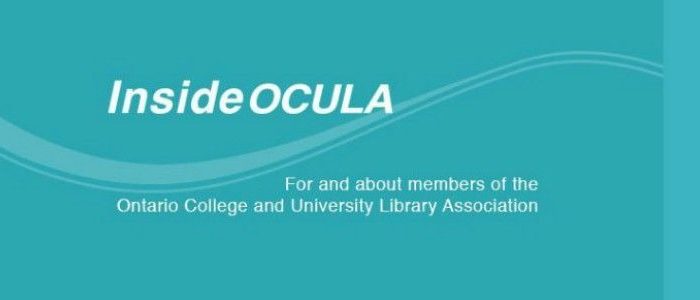
Putting the Who in the Canadian Academic Librarian Community: CAPAL Census
Who are Canada’s academic librarians? That question will be answered by Canada’s first census of academic librarians, which attracted more than 900 responses from librarians across the country.
The census was conducted by the Canadian Association of Professional Academic Librarians (CAPAL) from June to September 2016. The undertaking followed a motion at CAPAL’s May 2015 annual general meeting stating “that CAPAL commit to conducting a biennial census of Canadian librarians.” Planning for the first census of academic librarians followed that summer. Academic librarians’ desire to have a more complete picture of who they were as a profession had become clear in early 2015, when a preliminary survey was posted on the CAPAL-L listserv to gather feedback regarding members’ interest or concerns in conducting a census.
Seventy respondents completed the initial seven-question survey. Strong support for a census undertaking was confirmed, with 89 per cent of the respondents endorsing the project More than 90 per cent of the respondents indicated they were interested in having information collected about the following demographic characteristics of Canadian academic librarians: geographical distribution, institution type, years of professional experience, gender, level of education, and age. Perhaps not surprisingly, support was not nearly as high (61 to 66 per cent ) for the collection of more personal types of data such as race and ethnic identity, disability, or country of origin. Just over half of respondents supported the collection of data around sexual identity.
Personal information
The need to collect personal information such as one’s marital status or the number of dependents may initially seem puzzling. However, such baseline data is important for the study of gendered professions and the exploration of work-life balance issues. Women are still the primary caregivers, whether of children or elderly parents. It is hoped that the census data can inform policy development and contract negotiations in support of flexible work arrangements and professional autonomy.
In late fall 2015, a small working group was created to advise on the following tasks: design and test the census instrument; draft the submission for obtaining university ethics approval; and conduct the survey. The census project received ethics approval from both MacEwan University and Queen’s University. Approximately 40 Canadian academic librarians, including members of the CAPAL Advocacy Committee and the CAPAL Board of Directors, were invited to field test the census instrument.

The choice to call the initiative a census versus a survey was very deliberate. A census is an enumeration of a population and questions typically include occupation type, education level, marital status, and so on. A census is a fact-gathering project, and also underscores that the focus is not about any one individual’s personal research agenda, valid as that may be. The census is about us and our demographic characteristics. It is about putting the who in the Canadian academic librarian community.
Open data was a guiding principle for the census initiative from the very beginning. The open data concept speaks to core professional values; however, it was also recognized that academic librarians should be able to use this data to do research about their own profession. The data collected from the census, once anonymized, will be deposited and openly accessible via the Dataverse repository hosted by the University of Alberta. It should be emphasized that data at the micro level or per census form will never be available open access.
There are many ways to anonymize data. Perhaps the most obvious one with respect to this particular census initiative is to separate out the responses from the professional title question so that they can never be cross-referenced with the responses from any other question, for example, salary. Position titles are often unique, and therefore, to protect individual identity, they will be listed in the open access data set, but never linked with another data set. The studying of titles over time can provide valuable insight into professional trends and evolution. Another manner of anonymizing data is to collapse categories into broader groupings. This is typically done for geographical data. For example, provinces can be collapsed into regions such as the Maritimes. Sometimes it may be necessary to remove a variable altogether or remove outlier values, such as a very high salary point to protect anonymity. For the purposes of the CAPAL census initiative, these and other methods in order to anonymize data will be considered.
Key findings to be released this fall
It is anticipated that the data from the CAPAL census will be released in stages, the practice followed by Statistics Canada. Data releases are targeted for later this fall and through the early part of 2017. Announcements will be made via social media channels and the CAPAL-l listserv. A summary of key findings will be released this fall. A technical report documenting decisions and steps taken to collect and anonymize the data will also be released and available open access at a later date.
The CAPAL census closed on Sept. 6, with over 900 responses. However, all questions were optional and a “prefer not to answer” option was provided for questions deemed sensitive in nature, so the response rate per each question will vary. Much valuable information about our demographics has been willingly shared with us by our academic colleagues, and CAPAL looks forward to sharing the data with our immediate professional community and beyond.
Image: the Blue Diamond Gallery
Eva Revitt is a Subject Specialist Librarian at MacEwan University supporting the School of Business and Communication Studies program. She is also the Chair of the CAPAL Advocacy Committee. Eva can be reached at revitte[at]macewan.ca
This Post Has One Comment
Comments are closed.



[…] Check out a recent article written by Eva Revitt in OLA’s Open Shelf magazine: http://www.open-shelf.ca/161001-ocula-capal-academic-librarian-census […]